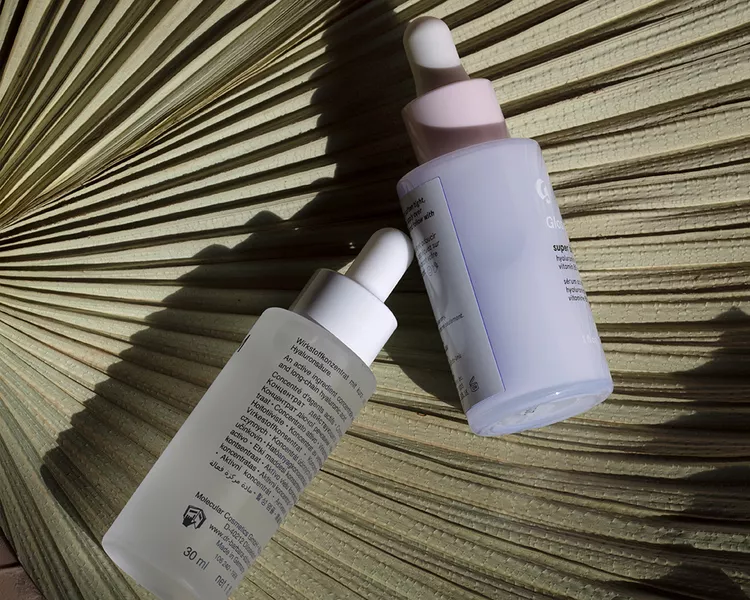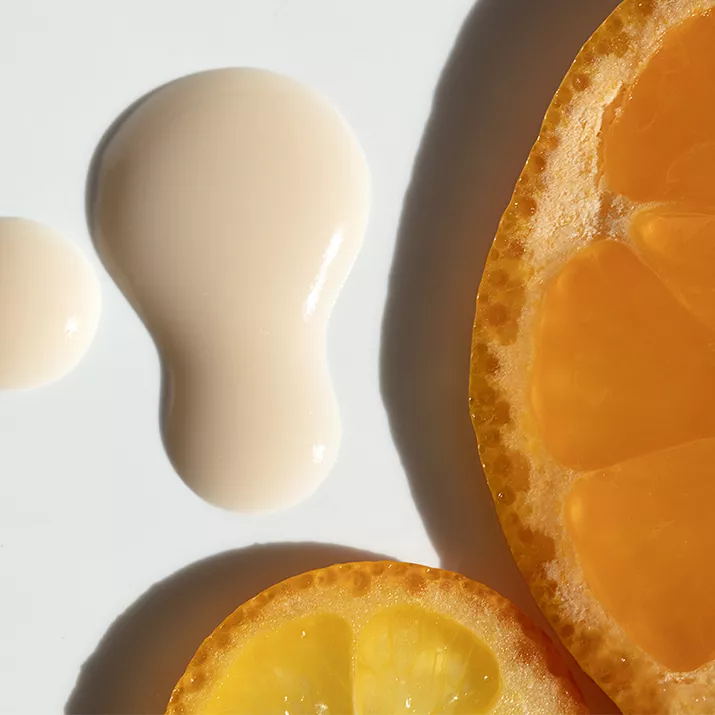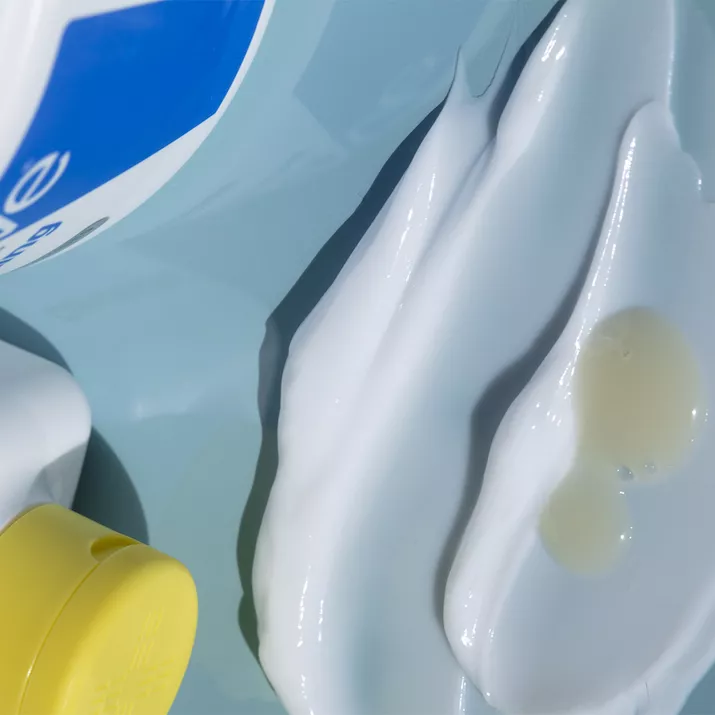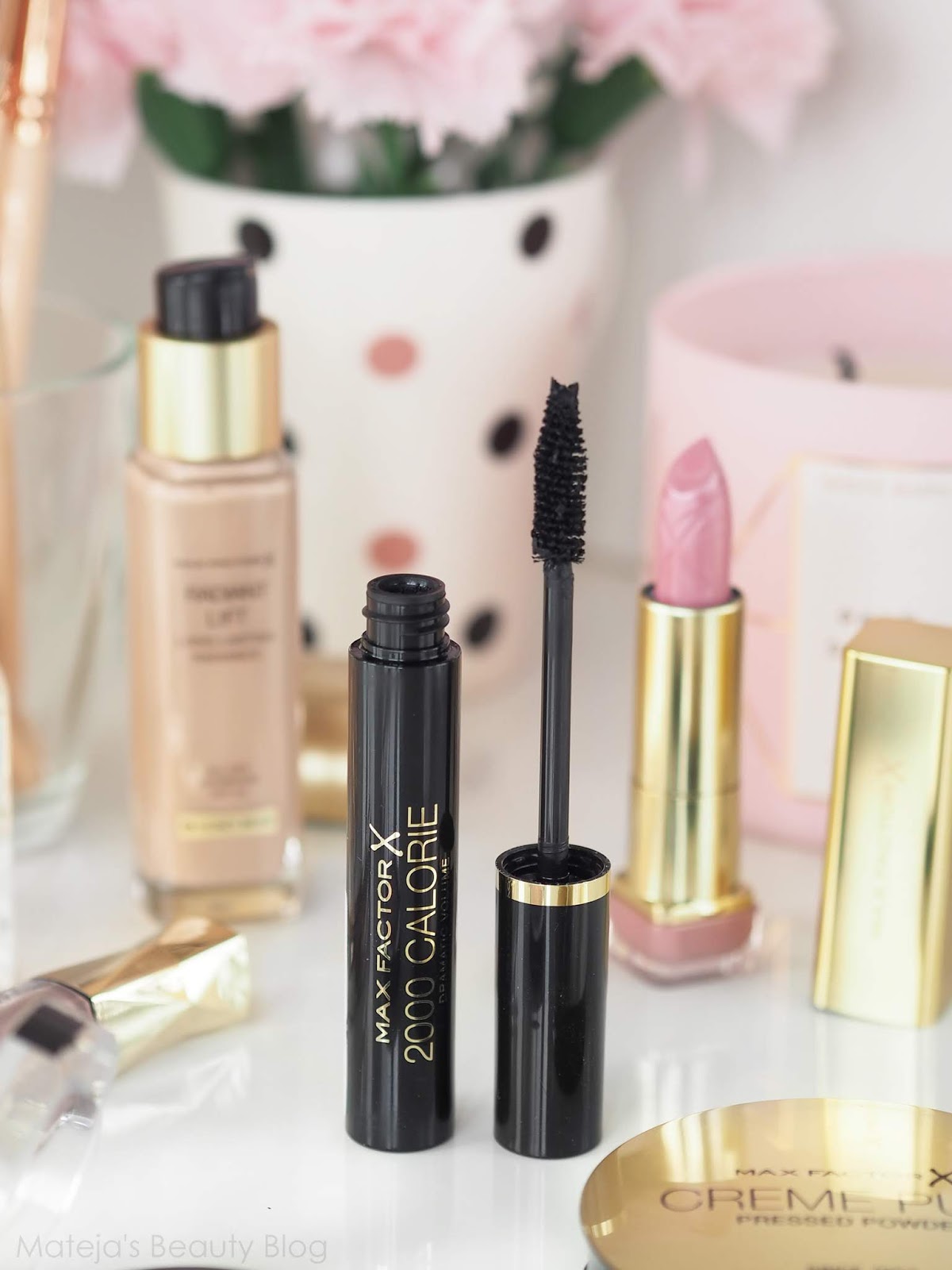
Hyaluronic corrosive is one of the, if not the, buzziest words in skincare. This generally hydrating humectant is equipped for restricting more than 1,000 times its weight in water and is currently one of the most eminent and pursued saturating ingredients.1
At any point can’t help thinking about how this well known fixing blends in with others? We talked with corrective physicist Shuting Hu, tasteful expert Linne Linder, and board-confirmed dermatologist Shari Sperling, MD, to find out. Peruse on to learn exactly how hyaluronic corrosive functions with your #1 skincare fixings.
Hyaluronic corrosive is one of the, if not the, buzziest words in skincare. This generally hydrating humectant is fit for restricting north of 1,000 times its weight in water and is currently one of the most eminent and pursued saturating ingredients.1
At any point can’t help thinking about how this well known fixing blends in with others? We talked with restorative scientist Shuting Hu, stylish specialist Linne Linder, and board-guaranteed dermatologist Shari Sperling, MD, to find out. Peruse on to learn exactly how hyaluronic corrosive functions with your #1 skincare fixings.
1. Retinol
What It Is
Retinol is a strong fixing gotten from vitamin A that animates collagen creation and supports cell turnover.2 “In this family, we have retinol, retinaldehyde, and retinoic acids,” makes sense of Linder. “Retinol must be changed over completely to retinaldehyde then to retinoic corrosive in the tissue. Retinoic corrosive is the just retinoid that attempts to invigorate collagen so change is totally fundamental for the item to work. You can get retinoic corrosive in a remedy structure (Retin-A) and retinols are available without a prescription or in clinical workplaces.”
Retinol items are generally endorsed by numerous skincare subject matter experts, dermatologists, and stylish professionals. “Retinol serums can deal with the skin in maybe one or two ways, such as animating collagen creation. It will assist with keeping wrinkles from shaping while at the same time finishing up any current scarce differences or kinks,” says Hu. “Retinol serums will likewise shed dead skin cells to uncover a more brilliant, smoother skin under. They additionally help to blur dull spots, sun spots, and hyperpigmentation.”
How It Works With Hyaluronic Acid
The specialists say that retinol and hyaluronic corrosive function admirably together, as they balance each other out.
“Retinol and hyaluronic corrosive are an ideal pair,” says Linder. “Hyaluronic corrosive goes about as a buffering instrument against a portion of the bothering that the skin can insight with retinoids. You can receive the rewards of retinol with no of the bothering incidental effects because of the saturating help from hyaluronic corrosive.”
2. Niacinamide
What It Is
Niacinamide is a vitamin B subordinate that is water-soluble.3 “Otherwise called vitamin B3, niacinamide is normally happening and crucial for sound skin cell capabilities,” says Hu. “Niacinamide… can actually clear skin inflammation, limit pores, blur staining, and even diminish barely recognizable differences and kinks. The fixing is likewise exceptionally viable with practically any item in your ongoing skincare routine so you can undoubtedly present it without the worry of confronting a breakout or causing bothering.”
How It Works With Hyaluronic Acid
The specialists say niacinamide and hyaluronic corrosive pair well together, and you may simply view as both as fixings in your most loved saturating items. “Niacinamide and hyaluronic corrosive are both water-based fixings that function admirably together for in general hydrating results, leaving the skin restored and limiting the indication of maturing and barely recognizable differences,” says Hu.
3. Vitamin C

What It Is
L-ascorbic acid is a strong cell reinforcement and fundamental supplement that people don’t create all alone. L-ascorbic acid shields your skin cells from harming free revolutionaries and empowers skin cell turnover, meaning it for the most part keeps skin cells sound and keeps harm from UV exposure.4 That being said, Sperling notes, “coordinating your L-ascorbic acid items with a decent sunscreen is dependably significant.”
“L-ascorbic acid is generally known for various advantages like calming impacts, animating new collagen development (neocollagenesis), giving strong cancer prevention agent insurance, and restraining melanogenesis (more obscure pigmentation),” says Liner. “Clinical examinations have shown L-ascorbic acid assists with barely recognizable differences and coarse kinks, skin surface and tone, and yellowing and staining, and further develops hydration, versatility, and skin solidness.”
How It Works With Hyaluronic Acid
L-ascorbic acid and hyaluronic corrosive as a combo can regularly have results like low-portion retinol. “L-ascorbic acid and hyaluronic corrosive work together by lighting up and hydrating the skin,” Hu says. “Together these two fixings can noticeably disintegrate wrinkles and work on the skin’s surface and appearance. “
4. Salicylic Acid
What It Is
Salicylic Acid is a beta-hydroxy corrosive that happens as a characteristic compound in plants. BHAs are more oil-dissolvable, and that implies they can undoubtedly get through the skin cells’ lipid layers and infiltrate the skin at a more profound level than water-solvent items and are calming specialists. Salicylic Acid goes about as an effective antibacterial specialist because of its capacity to advance exfoliation.5
“Salicylic corrosive is most commonly found in skin break out face washes and chemicals or spot medicines,” says Hu. “It can profoundly enter the skin and go past the surface layer; it’s a truly strong skin break out battling fixing.” Sperling Adds: “[Salicylic acid] helps eliminates overabundance oils from the skin. It likewise assists treat whiteheads and zits while diminishing pore with estimating.”
How It Works With Hyaluronic Acid
Hyaluronic corrosive for the most part praises salicylic corrosive with its hydrating benefits. “Salicylic corrosive can in some cases cause the skin to feel dry after use,” Hu says. “When matched with hyaluronic corrosive, the skin can approach more dampness and seal that dampness in.”
5. Glycolic Acid
What It Is
Glycolic Acid is an AHA (alpha-hydroxy corrosive) got from sugarcane that has calming effects.6 “[Glycolic Acid is a] water-dissolvable alpha-hydroxy corrosive,” Hu shares. “This regular corrosive comprises of minuscule particles making it more straightforward for your skin to assimilate. With its capacity to rapidly ingest into the skin glycolic corrosive goes about as an exfoliant, making it ideal for smoothing scarcely discernible differences, further developing skin surface, and setting off your skin to make more collagen. Glycolic corrosive is likewise used to assist with any sun harm or skin inflammation scars by wiping out the pores.”
How It Works With Hyaluronic Acid
Glycolic corrosive for the most part functions as an exfoliator and hyaluronic corrosive as a hydrator, so specialists say the two sets well together. “Glycolic corrosive increments cell turnover, which can in some cases lead to skin bothering, so it is essential to coordinate it with a saturating component, for example, hyaluronic corrosive,” says Hu. “Utilizing the two together can prompt more splendid, dewier skin.”
6. Lactic Acid
What It Is
Lactic Acid is an exfoliant that actually gets from… ruined milk. Indeed, you read that accurately. “Gotten from the maturation of lactose, which is a sugar found in milk, lactic corrosive is a synthetic exfoliant, all the more explicitly an alpha hydroxy corrosive (AHA), that attempts to hydrate skin and work on the general appearance,” Hu says. “Lactic corrosive is known to increment cell turnover, which takes out dead skin, prompting a more brilliant and smoother coloring. It is a gentle type of AHA, making this an extraordinary choice for those with delicate skin.”
How It Works With Hyaluronic Acid
Like glycolic corrosive, this exfoliant coordinates pleasantly with hyaluronic corrosive. “While lactic corrosive is peeling, hyaluronic corrosive is hydrating,” Hu says. “Lactic corrosive shaves away any dead skin cells that have developed, which can prompt flaky skin and breakouts. Nonetheless, when joined with the feeding and saturating properties of hyaluronic corrosive, the two acids can prompt delicate, smooth, and hydrated skin, assisting you with accomplishing a reasonable and shining composition.”
7. Ceramides

What They Are
Ceramides are saturating waxy lipid particles that assume a fundamental part in organizing and keeping up with the water penetrability boundary capability of the skin.7
“Ceramides are lipids (unsaturated fats) that make up around 50% of our skin obstruction,” says Linder. “Consider ceramides as the paste that keeps our skin cells intact and shields us from the components and from water misfortune. Low ceramide levels can add to such skin conditions as skin inflammation, dermatitis, and rosacea. Since age and the climate decline the viability of our body’s normal ceramides, we really want ceramides in our skincare to give sound maturing of the tissue and reestablish the skin’s hindrance. Adding ceramides to your skincare will assist you with having firmer, plumper, smoother-looking skin.”
How They Work With Hyaluronic Acid
“While the two have various instruments of activity, they work amicably to keep the skin stout and hydrated,” expresses Linder of hyaluronic corrosive and ceramides. “Hyaluronic corrosive draws in up to 1,000 percent of its sub-atomic load in water particles; along these lines, it keeps your tissues hydrated and forestalls water misfortune. Hyaluronic corrosive assists with holding the dampness of the hindrance and forestall undesirable collagen and elastin breakdown. Very much like a middle person between your tissues and your invulnerable framework, hyaluronic corrosive advises your resistant cells to answer irritation so that skin can fix appropriately. Likewise, yet through various systems, ceramides work to quiet aggravated and aroused skin and reinforce the cell design of the skin. Hence, the two fixings together give a strong mitigating and defensive collaboration.”
8. Glycerin
What It Is
Glycerin is a humectant that increments epidermal hydration for the skin.8 “Glycerin draws water from the closest sources right to the skin,” says Hu. “It attempts to hydrate the external layer of the skin, further develop the skin’s boundary capability, and give insurance against skin aggravations.”
How It Works With Hyaluronic Acid
“While glycerin hydrates and sustains the external layer of the skin, hyaluronic corrosive aides fill kinks and scarce differences,” makes sense of Hu. “Glycerin and hyaluronic corrosive function admirably together with regards to hostile to maturing advantages and battling dryness, assisting you with accomplishing delicate, graceful, and hydrated skin.”
9. Squalane
What It Is
“Squalane comes from squalene, which is a slick substance tracked down in plants, individuals, and creatures,” says Hu. “A characteristic lipid attempts to soak and safeguard your skin and is tracked down in human sebum. Both squalane and squalene are utilized as saturating specialists and assist with expanding flexibility and versatility in the skin.” Studies support that squalane additionally builds the pace of boundary recuperation and helps switch transepidermal water misfortune for the skin.9 Squalane can assist with decreasing scars, hyperpigmentation, and sun harm. It can likewise decrease scarce differences and dry fixes, and is the most ideal for those with slick or skin break out inclined skin.”
How It Works With Hyaluronic Acid
“Squalane and hyaluronic corrosive are normally happening in the human body,” says Hu. “Squalane secures in dampness and hydrates at a more cell level, while hyaluronic corrosive attempts to build the skin’s water level. Together, they are two extraordinary fixings to battle indications of maturing and keep your skin’s dampness hindrance at ideal wellbeing. Utilizing hyaluronic corrosive and afterward layering squalane on top is the most ideal way to attract hydration and keep it secured.” Needless to say, the two are a saturating power pair.
10. Collagen
What It Is
Collagen is a protein — the main underlying protein in your skin at that, and the unequivocal protein that decides skin physiology.10 “Collagen attempts to keep the body intact, as it structures what basically is a boundary to give strength and design to your body and skin,” says Hu. “A protein is normally happening in the body’s skin, bones, ligaments, and muscles, and is likewise utilized for clinical and corrective purposes, for example, for fixing body tissue.”
“Collagen assumes a significant part in reinforcing skin, expanding versatility, and supporting hydration, assisting your skin with looking stout and energetic,” Hu proceeds. “As you age and are presented to open air factors, for example, UV beams, the pace of collagen creation in your body starts to decline. Effective collagen is perfect for giving your skin some additional dampness and can help your skin look and feel milder and smoother.”
How It Works With Hyaluronic Acid
Hyaluronic corrosive is one of the critical elements for supporting collagen. “As both hyaluronic corrosive and collagen give the skin dampness and sustenance, the two cooperating can assist with decreasing indications of maturing, for example, almost negligible differences and kinks, leaving your skin looking stout and glowy,” says Hu.
Incidentally, there aren’t numerous fixings that hyaluronic corrosive doesn’t work with. This hydrator is by and large safe for all skin types, has no known general negative responses, and can help saturate and fix skin out of luck.


